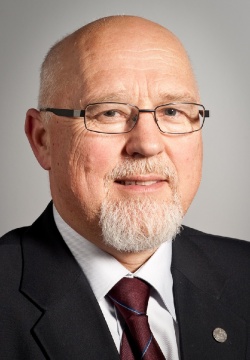Improving the job’s attractions to enhance recruitment
15:30–16:45
Session 2
Concerns: What can be done about the lack of young radiologists in Europe?
Prof. Jarl Jakobsen (MHA), Consultant Radiologist, Department of Radiology and Nuclear Medicine, Rikshospitalet, Oslo University Hospital; Oslo/NO
‘The demand for radiology procedures, even on a 24/7/365 basis, seems to increase faster than the number of new radiologists. The shortage of radiologists creates a service provider gap. Further, quality, safety, education, and research become threatened,’ says Professor Jarl A Jakobsen MD PhD MHA, University of Oslo and Oslo University Hospital.

A consultant radiologist since 1989, he headed the Department of Radiology at Rikshospitalet and, from 2005-2010, served as Chairman of the Division of Medical Imaging and Intervention at Oslo University Hospital.
Today, he is Professor of Radiology at the university as well as Consultant Radiologist and Head of the Department of Radiology and Nuclear Medicine at the Oslo University Hospital.
In management, he has lead large change processes in radiology, e.g. moving into and organising a new department, conversion to a digitised department, and the merger of imaging departments in Oslo into one unit with 700 employees.
He holds various board and committee positions, is a member of national and international radiological societies and a Fellow and founding Member of the European Society of Urogenital radiology.
As well as organising and chairing several radiological courses and lecturing, with a focus on radiological management/IT, ultrasound, contrast media and abdominal radiology, Prof. Jakobsen has authored over 100 scientific papers and textbook chapters and produced articles for popular and administrative journals.
Generation X is now entering radiology. Their preferences for and requirements from the jobs may be different from those experienced by today’s Heads of Department. Thus, recruiting requires an open-minded dialogue and understanding of who the applicants are and what kind of life they will live.
Positive rumours about the department enhance recruitment. Rumours are spread on compulsory courses, at conferences, in alumni, on social media (internet), when residents leave us, etcetera. To us, recruiting good radiologists has been very easy during the last 10 years and we believe our reputation is a strong contributing factor.
Many factors may retain young radiologists -- for example, possibilities to participate in academic activities, to have some autonomy in organising their working week (e.g. the use of teleradiology from home, and on-call structures adapted to modern family life) and opportunities to specialise.
The working environment is also important. Leaders might have to choose between preserving the status quo and accepting new structures. However, most adaptations are cheaper than being a bottleneck in the hospital, or having to start new recruitment.
In the future we will meet new challenges, but competent leadership will still be required when young radiologists have to be recruited.
11.02.2011





